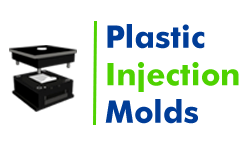- Mould Manufacturer
- Tooling
- Moulding Die
- Plastic Molding
- Plastic Injection Molding
- Injection Molding
- Nylon Injection Molding
- Injection Moulding
- Custom Injection Molding
- Injection Mould
- Injection Mouldings Process Manufacturers
- Medical Injection Molding
- Polycarbonate Injection Moulding
- Rapid Injection Moulding
- Injection Molds
- Injection Molding Cost
- Injection Molding Suppliers
- Injection Moldings
- HDPE Molding
- Metal Injection Molding
- Rubber Injection Molding
- Mold Designing
- Prototyping
- Automotive Injection Molding
- Blow Molding
- 3D Printing
Comprehensive Guide to The Process of injection blow molding
The industrial sectors are able to support the increase in the demand for plastic containers and products as the new technology of injection blow molding creates a new benchmark. The process shares many common technological characteristics with the conventional injection molding procedure. It significantly reduces the energy necessary to create molds.
More about injection blow moulding
The process of injection blow moulding is very similar to the extrusion blow molding, except for the part where the manufacturer has to form the parison through injection molding around the core rod or metal shank.
- The parison comprises a fully formed jar or bottleneck that has an attachment to the thick polymer tube. This will form the body of the bottle.
- You have to transfer the core rod or parison to the blow molding part of the particular machine.
- At this point, you have to inflate and cool the preform.
Once it is cool enough, the bottle starts rotating and ejects automatically. Maximum plastic blow molding companies use this technique presently.
Facts about the stages of preform molding
If you are looking for some additional knowledge about the process, then this is your opportunity.
- Injection: The entire process depends on an extruder barrel and an assembly of crews that will melt the polymer.
- Blowing: this is the step that will help inflate the mold and make it take up the shape you want.
- Ejection: after stripping the article off from the core., you must test it for leakages. Every reputed blow molding companies are particular about carrying out these checks as it helps in maintaining the quality of manufacturing.
Preform mold aids in superior quality production
If you are concerned about the quality of manufacturing, then it is vital to adopt the injection process in blow-molding instead of going for the traditional procedure. IBM is unique in using the raw material first for injection moulding to form a shape and then shuttle it into the second process station. After heating a part of the material, the blow operation starts to form the final part.
Most of the blow moulding companies complete the entire process within a single piece of the process equipment. Hence, the procedure is efficient and can help produce a much thicker wall with a higher quality of the parts.
Eliminate secondary operations
The traditional system becomes another piece of work to remove the flash and the pinched-off materials. But making the preform mold will terminate any need for clearing the pinched-off materials and the flash. After blowing and cooling, there won't be any need for secondary operations.
High profile machines for preform molding
You will find both the three-station and the four-station for performing the injection blow process for moulding. The large injection blow mouldersall across the world support the four-station design for the preform molding. In fact, the fourth station is necessary to allow the conditioning of the core rods through us the use of an air chamber. These core rods do not have a temperature control feature. But you can allow the shanks to remain within a specific temperature gradient.
Tooling for injection blow moulding
A highly refined process will always demand equally strong tooling. That is why you will notice all the top plastic blow moulding companies are using sophisticated tooling systems for making flawless preforms. The technique is a complex one, but the outcome is exhilarating. So there should be no compromise in the systems.
FAQ
- Q1. How Long Do Blow Molds Last?
Blow molds typically last for thousands to tens of thousands of cycles, depending on factors such as material quality, design, and maintenance. With proper care and occasional refurbishment, they can endure for many years, ensuring consistent production of plastic products in various industries.
- Q2. Can Blow Molds Be Repaired?
Yes, blow molds can be repaired through various methods such as welding, machining, or coating application to fix damages like cracks or wear. Skilled technicians use these techniques to restore functionality and extend the lifespan of the molds, ensuring continued production efficiency in manufacturing processes.







.webp)

